What’s the big deal?
Almost every one is terrified of sharks, but it turns out sharks only kill about a dozen people a year.
Now compare that to more than 100 people who die annually from drowning in rip currents in the US alone.
That’s how many people are attacked (but not killed) by sharks worldwide every year. Rip tides are kind of a big deal. Yet if you can tread water, float, swim, and hold your breath for 15 seconds max, there’s no reason for you to not make it out of a rip tide.
If you find yourself caught in a rip tide, it’s a little too late to inform yourself; the people around you are probably just as clueless as you are anyway. Most people are pretty clueless about drowning in general, actually.

Image credit: Buttersafe
We’re all taught to believe that drowning is loud and chaotic. It’s not. Drowning is actually pretty quiet and undetectable to most who aren’t trained in life-guarding.
By the time you get to the point that you’re about to drown, you are using all the energy you have left to hold your mouth above the water to breathe in air. There’s no yelling, there’s no flapping. And then eventually you gulp water instead of air, or just accept death and sink.
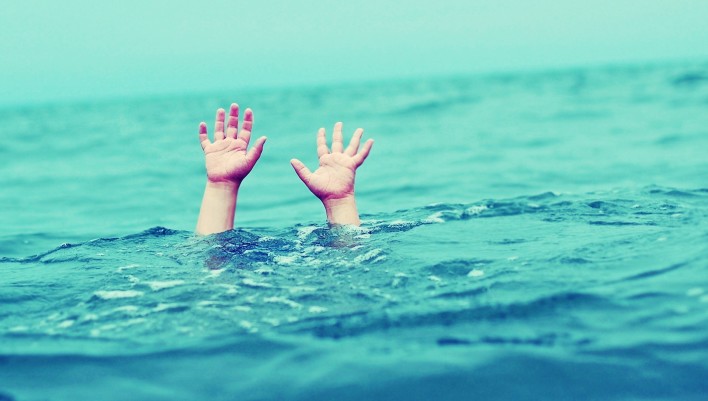
Image credit: Straightspeak
So , how does anyone get to that point of exhaustion anyway?
One of the major reasons is rip currents, and it’s important for everyone, ESPECIALLY people who aren’t normally around ocean currents, to understand how rip tides work. In fact, I think the further you live from the ocean, the more you should care about rip currents.
Why should I care?
We all dream of beach-side vacations, particularly those of us most land-locked, and at some point, we’ll be able to afford ourselves a nice little holiday by the beach. While most people are busy being wary of the sharp teeth of usually non-existent sharks, we should actually be focusing on the real trouble: currents we are oblivious to.
If we were able to see them from above, this is what a rip-current would look like. A sort of horizontal, two-dimensional mushroom cloud:
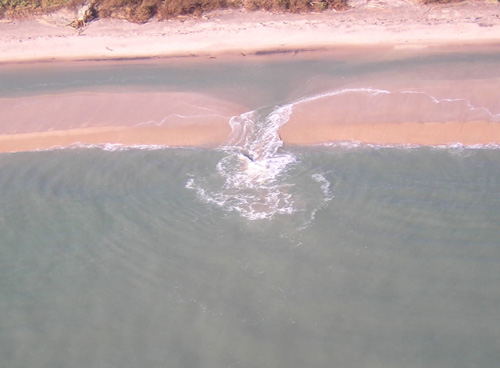
Image credit: Surfer’s Village
If you could see the ocean like this, obviously, you’d avoid that part of the beach. But it’s not that simple. When you’re wading in the shallows, it’s almost impossible to see which direction the water is moving in, and anyway, very often on long stretches of sandy beach, the channel the water drains from moves every few minutes.
How does it work?
When waves come in and crash on the beach, all that extra water needs to go back out to the open sea. Often that happens in the form of an undertow. The water drains out evenly over the beach and pulls from close to the sand, back out under crashing waves.
When undertows become dangerous is when the water finds itself a channel to drain back out through. This could be an existing and permanent trench in a reef or rock bottom, or, in the case of sandy beaches, wherever the undertow happened to be strongest on that specific set of waves, a channel is dug by the power of the water into the malleable sand bottom.
All of the water drains out through that one exit with tremendous force.
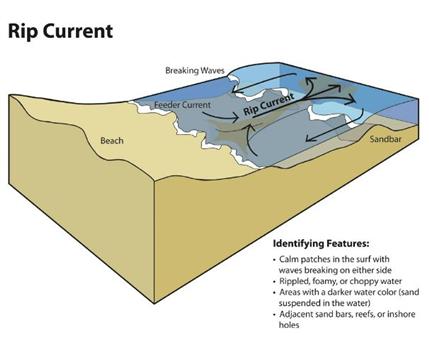
Image credit: National Geographic
If you haven’t gone in for your dip yet, take a look at the beach and look to see if there are any noticeable muddy water areas, or calm patches in the breaking waves.
If there are, that means this beach has rip currents. Of course, avoid the area you just identified as a rip area, but that doesn’t mean it’s safe to swim everywhere else on the beach.
Remember that in sandy bottoms, the channel can potentially move locations with every crashing wave. If you know this beach has rip currents, be aware of your surroundings at all times. If at any point you realize that the sand is moving out from under your feet at a very rapid rate, that the water around you seems muddier, or that it’s difficult to swim back to shore, you’re now in the middle of a rip current.
What do I do if I’m in a rip?
This is the point when most people panic, and that is exactly what you DO NOT want to do.
There is no reason to panic, especially since you now know exactly what is happening around you. Most of the people who drown due to rip currents do so after exhausting themselves trying to swim back to shore.
You CANNOT swim back to shore through a rip current channel. It doesn’t matter if you’re Michael Phelps, that water is much much much stronger than you, rushing out at up to 8 feet per second. Panicking and frantically trying to swim back to shore will only lead to your wasting your resources and decreasing your chances of making it back safely.
Image credit: St Simons Surf Sailors
The correct thing to do once you realize you’re in a rip tide is completely counter-intuitive, and that’s why it’s essential to inform yourself when you’re still in Kansas, not in Costa Rica.
Pick your feet up, let the current take you out to sea and swim parallel to the beach. What you’re trying to do is swim out of that channel.
For a while it will most likely seem like you’re going nowhere paddling sideways either, that’s because until you make it to the head of the mushroom, there is still a lot of current pushing against the channel from both sides. Do not panic. Save your energy, tread water, or float on your back, let the current take you out a bit further out, then try again.
Yes, it’s much easier said than done. Often, the rip will take you out past the larger breaking waves. Probably you aren’t too comfortable with the size of those waves, but do not freak out. Once you realize that you can swim parallel to the beach at a regular rate, try to swim back towards shore. If you realize that you are making headway, congratulations, you’re out of the channel!
Being out of the channel means there will be surf (breaking waves) around you. Sometimes bigger than others. Make use of them. Swim hardest as the wave is coming to you and try to body surf it, or at least use some of its force to bring you back to shore, and save yourself some energy.
Large waves can be very intimidating, but they are much safer than a rip channel. A large wave can hold you down, but if you can hold your breath for 15 seconds, you will be able to make it out of there no problem. Go ahead, hold your breath for 15 seconds now…… See, waves are nothing to worry about, current is.
So next time you see a sign like this:
Image credit: Great Lakes Gazette
Take it seriously. Take the time to read it and look for that specific day’s advisory report (if available) and beach-specific information. Get your friends to take it seriously too and inform each other of what you know about rip currents.
Then, go out and enjoy the ocean.
What do I do if my friend’s in a rip?
If one of your friends gets caught in a rip while you’re still on shore, and there is no lifeguard, grab a floatation device, go grab them, calm them down, and help them paddle back in to shore safely.
If you don’t have anything that could serve as a floatation device, and there is no lifeguard on the beach, it’s a tough call. I’d recommend only going out if you know you can handle the elements yourself. It’s very difficult to calm down a person in distress, even more difficult to handle your weight and theirs in strong currents.
What’s worst than one drowning victim is two. But now that you know what rip currents are all about, you should be prepared.
Prevention is your best bet.
Rip currents are just one from of dangerous currents, there are more.
Be safe and enjoy the water!
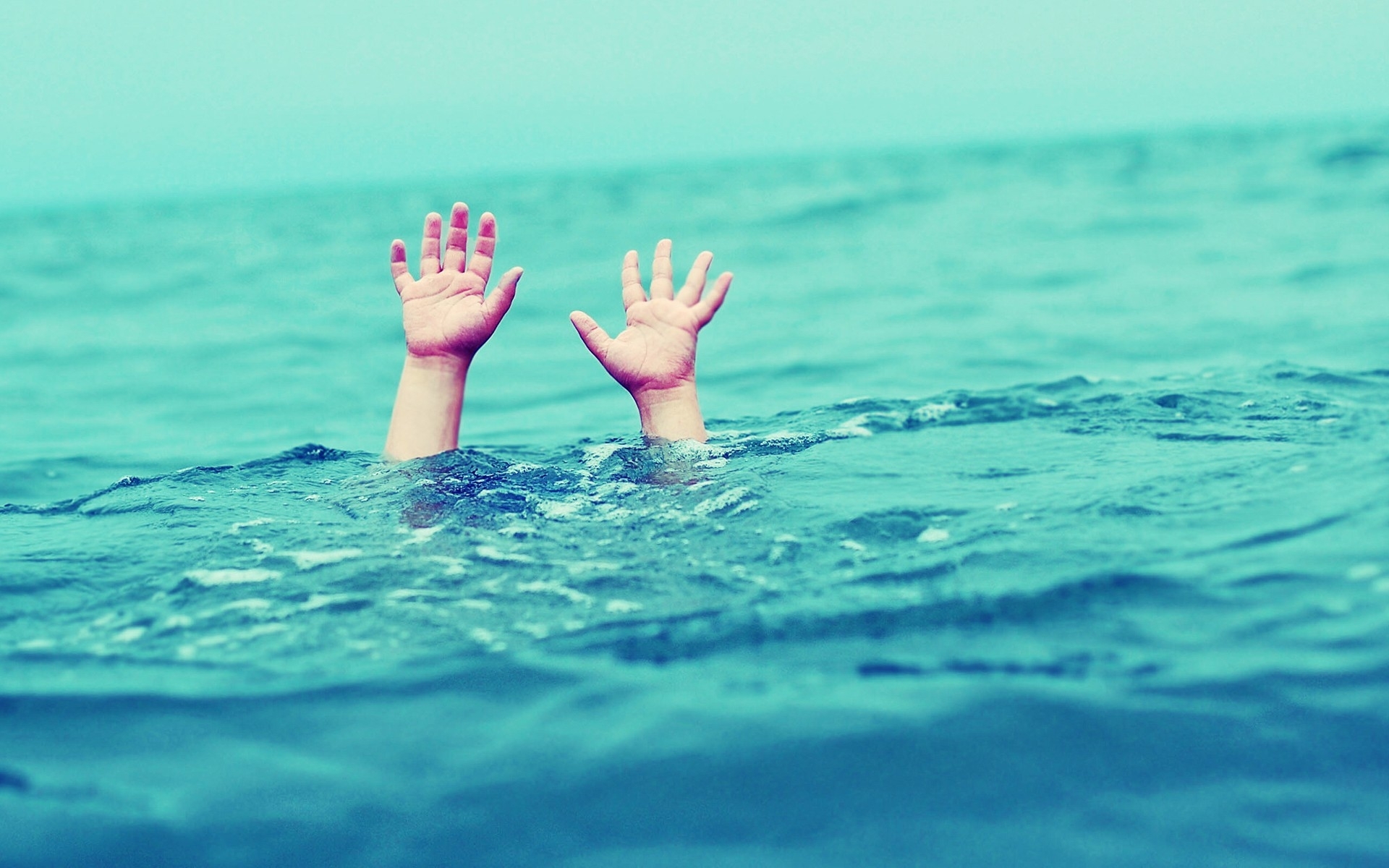
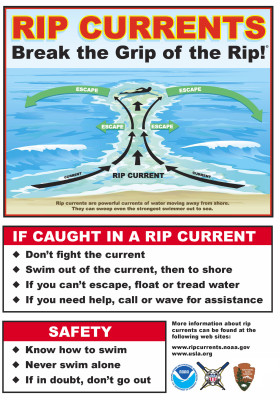
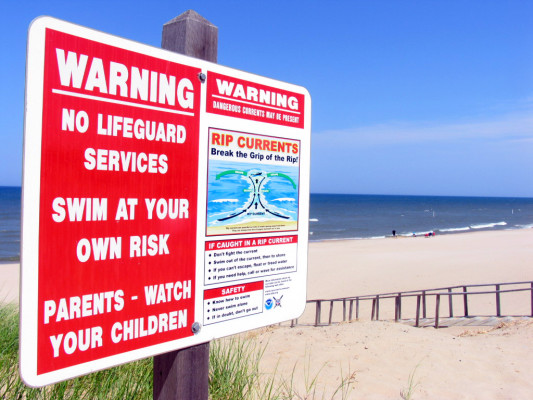









I’m not sure I ever seen a rip current where I am in Antigua. I’ve actually never heard of them much. Most drownings here happen because of exhaustion and simply because of kids swimming out too far and in deep waters. But rip currents sound scary than a MOFO :lol:!
I’m scared of sharks too but from what you detailed here, I think sharks take a back seat.
It’s only scary if you don’t know what’s happening. It’s also very important to keep watch of kids in the ocean. I’d loooooooove to see Antigua! one day :)
I hear you about the kids part. I have a 4 year old boy and I’m always wary of this because her mother would leave them unattended in the water. We had about 3 drownings over the past 2 weeks. For all I know, could’ve been rip currents.
Can you tell us of any big rips in the Cabarete area? I’ve heard there’s one out in front of casa mami, or just around the corner from Janets somewhere?
I don’t actually know of any, but the beach in front of Mami’s does look like the type that would have occasional rips if the swell was in the right direction.
I’d love it if there was some kind of authority I could ask.. you know, like a beach lifeguard or something ;)
Yea they move all around Cabarete beach. I’ve seen a few in the stretch from Millennium to Ocean one
I will quickly seize your own rss when i can’t to uncover your own contact subscription backlink as well as e-newsletter assistance. Perform you’ve virtually any? Generously make it possible for me recognise so that I might just simply subscribe. Thanks.
Thanks from bringing up a good point daipad, there is something scarier than everything previously listed… spintax. Spintax sometimes yield undesired side-effects. We at We travel and Blog don’t recommend you use it. It’s pretty ugly.